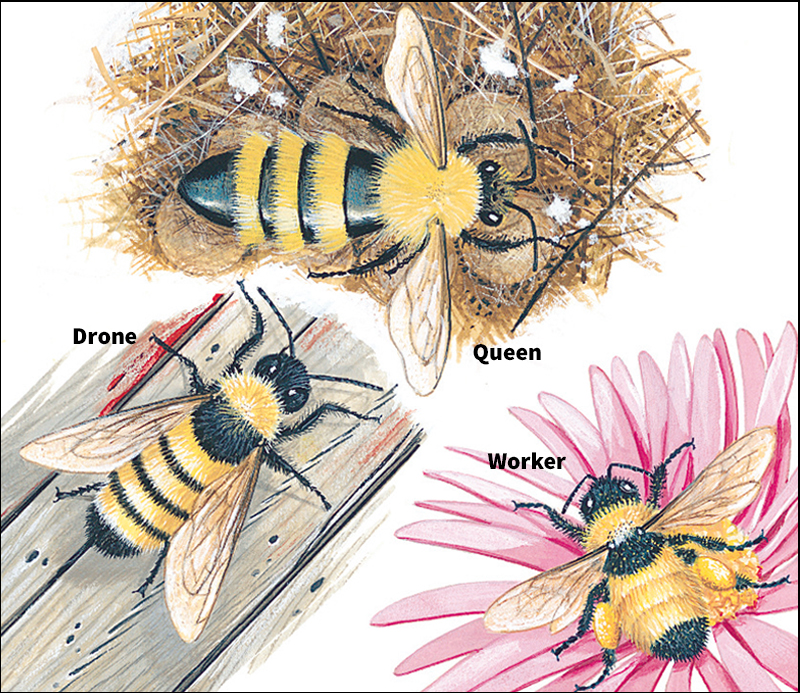Bumble bee is a large, burly bee that often has mostly black and yellow coloring. Bumble bees may be seen flying among flower blossoms during spring, summer, and fall. They live in most countries, from the Arctic to the Antarctic. Australia and some Pacific islands had no bumble bees until people brought them there.
Fine, thick, hairs cover bumble bees’ bodies. Like other bees, bumble bees have membranous wings. Queen bumble bees range from 3/5 to 1 inch (16 to 25 millimeters) long. Workers and drones (males) are smaller.

Many people fear bumble bees because of their noisy buzzing flight and long, sharp stings. Unlike honey bees, bumble bees do not die when they sting. They can sting repeatedly, but they only do so when defending their nest or when handled.
Life of the bumble bee.
Bumble bees are social insects. This means that they live in colonies (groups). The organization of the colony is not as complex as that of a honey bee colony. Only the queen bumble bee lives through the winter and starts a colony in the spring. During the summer, the colony may increase in size to 50 to several hundred bees. Many bumble bees make nests in thick tufts of grass or in shallow holes in the ground. Occasionally, a young queen may use an abandoned mouse nest for the colony’s home. Some species may nest in tree holes or in old birds’ nests.
In early spring, the young queen bumble bee crawls out of the crack in the ground in which she spent the winter. She flies about and searches for a place to start a new colony. She frequently drops to the ground and runs about looking for a good spot. Once she has picked her nesting place, the queen rarely leaves it, except to obtain nectar and honey from nearby flowers.
In the nest, the queen produces wax from her abdomen and builds a honey pot. She places nectar in this pot to eat during cold weather. Next, she builds a wax egg cell and lays eggs in it. In three or four days, they hatch into wormlikelarvae. The queen feeds these larvae a mixture of pollen and nectar. In about a week, the larvae spin cocoons and change into pupae (see Pupa).
The young bumble bees emerge from their cocoons in about 22 days. These first offspring are all workers. Two or three days after they emerge, the workers leave to hunt for nectar and pollen. They bring the food back to the nest for the colony to use. Some workers build more wax cells and enlarge the nest. The queen lays more eggs. Workers feed and take care of the new larvae. The queen’s only duty now is to lay eggs.
Late in the summer, the colony rears drones and queens. The drones do no work. Their only use to the colony is to mate with young queens. The young queens soon leave the nest, mate, and find places in the ground where they spend the winter. The old queen bumble bee and the workers die before winter.
Loading the player...Bumble bee on yellow flower
Importance of bumble bees.
Sometimes a field of clover or vetch has so many bumble bees that they outnumber the honey bees. Bumble bees are among the farmer’s best friends. They pollinate (help fertilize) numerous wild plants and many plants important as food for livestock. In gathering nectar and pollen, the bumble bees carry pollen from one flower to another. They have long tongues with which they can reach nectar deep within the flowers of red clover, vetch, and honeysuckle.
Predators of bumble bees
include certain beetles, flies, ants, mites, and wasps. Other predators (hunting animals) include birds and skunks, which may attack nests that are not well hidden. But humans probably do the most harm to bumble bees. Farmers use insecticides that kill bees along with insect pests. In addition, they destroy bumble bee nests in cultivating land.
